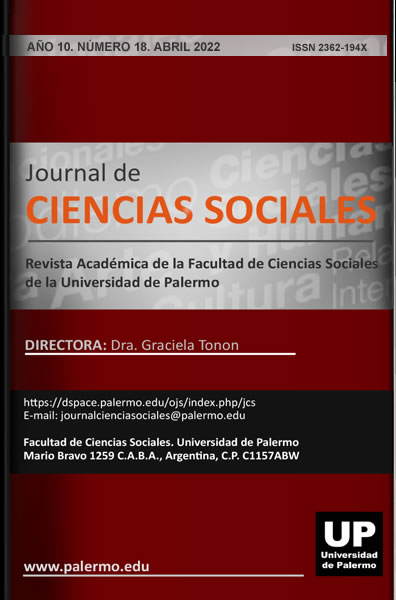The teaching of statistics in the context of the data society: challenges and reflections
Abstract
The conformation of the data society has replanted the relationship of people with reality; Access to large amounts of information raises the need for resources that enable the interpretation of data, to make decisions about everyday problems. That is why statistics are used as the discipline that offers these possibilities, however, the problems in its teaching, such as the decontextualization of the subject in the process of generating knowledge and the lack of a pedagogical framework to guide decisions of the teaching staff, has shown the need to reflect on the alternatives that can be followed in this field. Therefore, the present essay has the purpose of analyzing the current panorama of the teaching of statistics in the context of the data society, in order to propose some reflections that allow us to move towards statistical literacy. To comply with the above, in the first place, the incorporation of the teaching of statistics as an integral part of the research process is proposed; Later, some pedagogical reflections are developed that can be constituted as a frame of reference for the teaching of this body of knowledge and finally, the proposals that have been developed around statistical literacy are retaken, which include reflection on the role of the teacher, as well as the analysis of the curricular model in the teaching process.
Downloads
References
Abbagnano, N. y Visalberghi, A. (1992). Historia de la Pedagogia. Fondo de Cultura Económica.
Azcárate, P. y Cardeñoso, J. M. (2011). La Enseñanza de la Estadística a través de Escenarios: implicación en el desarrollo profesional. Boletim de Educação Matemática, 24(40), 789–810. https://bit.ly/3HQEiI2
Bayes Serrado, A. (2013). El Proyecto Internacional de Alfabetización Estadística. Números. Revista de Didáctica de Las Matemáticas, 83(1887–1984), 19–33. http://www.sinewton.org/numeros
Bernal, T. C. A. (2016). Metodología de la investigación. Administración, economía, humanidades y ciencias sociales. Pearson Educación.
Cañizares, M. J., Estepa, A., Batanero, C. y Vallecillos, A. (2017). Una década de investigaciones del grupo de estadística , probabilidad y combinatoria de la SEIEM 1. Tarbiya. Revista de Investigación e Innovación Educativa, 38, 39–60.
Causado-Escobar, R. E., Santos-Carrasco, B. y Calderón-Salas, I. (2015). Desarrollo del pensamiento vrítico en el área de Ciencias Naturales en una escuela de secundaria. Revista de La Facultad de Ciencias, 4(2), 17–42. https://doi.org/10.15446/rev.fac.cienc.v4n2.51437
Cervantes Luna, B. S., Maldonado Rivera, F., Linares Olivas, O. L. y Pesqueira Leal, L. (2017). Introducción a la estadística. En Estadística aplicada en Psicología y Ciencias de la salud. El Manual Moderno.
Coolican, H. (2004). Métodos de investigación y estadística en psicología (3ra ed.). Editorial El Manual Moderno.
Fullat, O. (2008). Filosofías de la Educación. Síntesis.
Gadotti, M. (2003). Historia de las ideas pedagógicas (4ta ed). Siglo Veintiuno Editores.
Gal, I. (2002). Adults’ statistical literacy: Meanings, components, responsibilities. International Statistical Review, 70(1), 1–25. https://doi.org/10.1111/j.1751-5823.2002.tb00336.x
Garfield, J., DelMas, R. y Chance, B. (2003). The web-based artist: assessment resource tools for improving statistical thinking. Assessment Resources for Statistics, Abril, 22.
Jonassen, D. H., Peck, K. L. y Wilson, B. G. (1998). Learning With Technology. A constructivist Perspective. Merrill.
Lerma, G. H. D. (2016). Metodología de la investigación: propuesta, anteproyecto y proyecto. ECOE Ediciones.
Martínez López, G. y Soto Urrea, W. H. (2019). Pedagogía del dato: perspectiva desde la enseñanza de la estadística en la sociedad del dato. Análisis, 51(94), 141-158. https://doi.org/10.15332/s0120-8454.2019.0094.07
Ormrod, J. (2006). Educational psychology: Developing learners. Pearson.
Pfaankuch, M. y Wild, C. (1998). Investigating the nature of statistical thinking. Fifth International Conference on Taching Statistics (ICOTS 5), 461–467.
Pinto, J., Tauber, L., Zapata-cardona, L., Albert, A., Ruiz, B., Mafokozi, J., Autónoma, U., México, D. Y. y Nacional, U. (2017). Alfabetización estadística en educación superior. Acta Latinoamericana de Matemática Educativa, 227–235.
Ramos, C. A. (2015). Los paradigmas de la investigación científica. Avances en Psicología, 23(1), 9–17. https://doi.org/10.33539/avpsicol.2015.v23n1.167
Ramos Vargas, L. F. (2019). La educación estadística en el nivel universitario: retos y oportunidades. Revista digital de investigación en docencia universitaria, 13(2), 67–82. https://doi.org/10.19083/ridu.2019.1081
Rodriguez-Alveal, F. E. (2017). Alfabetizacion Estadistica en Profesores de Distintos Niveles Formativos. Educação & Realidade, 42(4), 1459–1477. https://doi.org/10.1590/2175-623662610
Tauber, L. M. (2010). Análisis de Elementos Básicos de Alfabetización Estadística en Tareas de Interpretación de Gráficos y Tablas Descriptivas. Ciencias Económicas, 1, 53–74. https://doi.org/10.14409/ce.v1i12.1146
Tobón, S. (2005). Formación basada en competencias. ECOE Ediciones.
von Glasersfeld, E. (1997). Homage to Jean Piaget (1896–1982). The Irish Journal of Psychology, 18(3), 293–306. https://doi.org/10.1080/03033910.1997.10558148
Wallman, K. K. (1993). Enhancing Statistical Literacy: Enriching Our Society. Journal of the American Statistical Association, 88(421), 1. https://doi.org/10.2307/2290686
Watson, J. M. (1997). Assessing Statistical Thinking Using the Media. The Assessment Challenge in Statistics Education, 107–121. http://www.stat.auckland.ac.nz/~iase/publications/assessbkref.
Zapata-Cardona, L. (2011). ¿Cómo contribuir a la alfabetización estadística? Revista virtual Universidad Católica del Norte, 1(33), 234-247.
Zuluaga, O. L., Echeverri, A., Martínez, A., Restrepo, S. y Quinceno, H. (2011). Pedagogía y Epistemología. Magisterio Editorial.
Otros documentos consultados
Londoño, O. L., Maldonado, L. F. y Calderón, L. C. (2014). Guía para construir estados del arte. International Corporation of Networks of Knowledge. https://iconk.org/docs/guiaea.pdf
Organización para la Cooperación del Desarrollo Económico (OCDE) (2003). Marcos teóricos de PISA 2003. https://s3-us-west-2.amazonaws.com/documentos-web/Estudios+Internacionales/PISA/PISA+/PISA+2003/Marco+de+referencia+evaluacion+version+espanol.pdf
The authors retain the rights to their work guaranteeing this journal the right of first publication, committing to cite the Journal of Social Sciences as a reference of the original publication.
The works published in the Journal are published under the terms indicated in the Creative Commons License with the International Attribution 4.0 (CC BY 4.0).




























